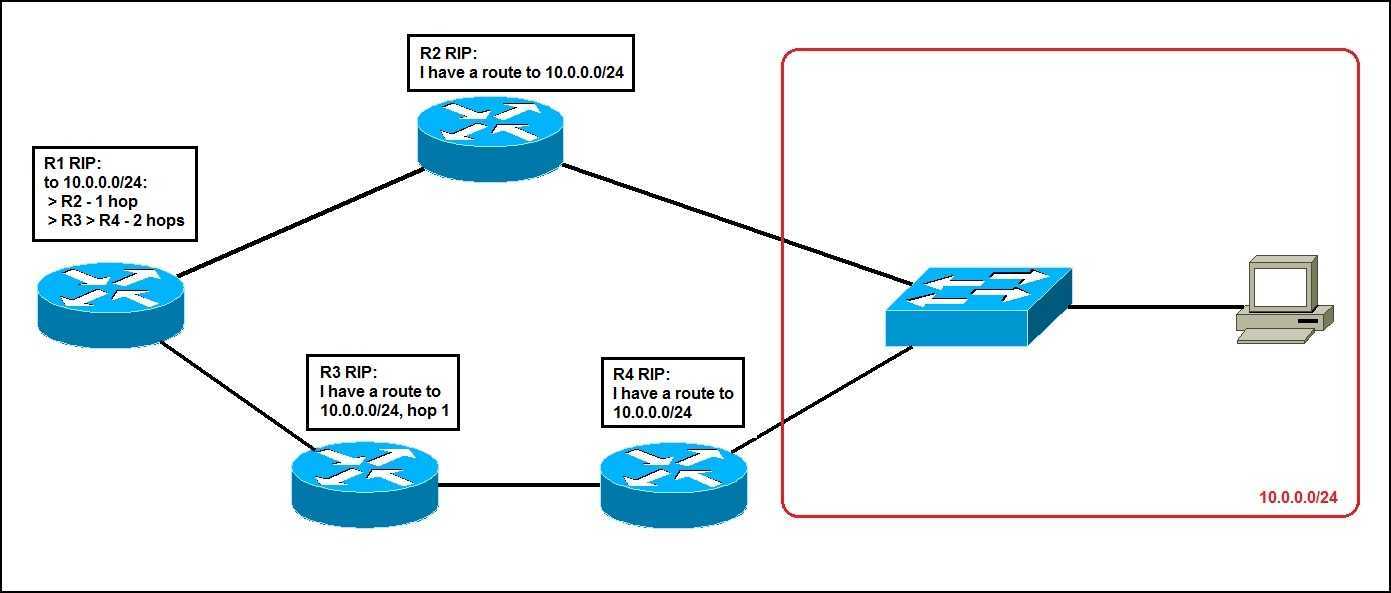RIP (Routing Information Protocol) overview
RIP (Routing Information Protocol) is one of the oldest distance vector protocol routing protocols, invented in the 1980s. It uses the hop count (the number of routers between the source and destination network) as the metric and is very simple to configure. Two versions of the protocols were developed:
- RIP version 1 – supports only classful routing and doesn’t send subnet masks in routing updates. Uses broadcasts for updates.
- RIP version 2 – supports classless routing and sends subnet masks in routing updates. This version uses the multicast address of 224.0.0.9 to send routing updates.
RIP has a default administrative distance of 120. It sends the entire routing table every 30 seconds, which can consume a lot of network bandwidth. The hop count limit is 15. Any route with a higher hop count will be marked as unreachable.
To better understand how RIP works, consider the following example:
We’ve configured RIP on all routers in the network. R1 will receive two possible routes to the 10.0.0.0/24 network; one going through R2, and one going through R3 and R4. Both routes are RIP routes and have the same administrative distance, so the metric is used to determine the best route. Of course, the RIP considers a hop count as the metric. In this case the route going through R2 will have a metric of 1, because there is only one router in the path to the 10.0.0.0/24 network. The route going through R3 and R4 will have a metric of 2. The first route will be placed in the routing table and used for packets sent to the 10.0.0.0/24 subnet.




